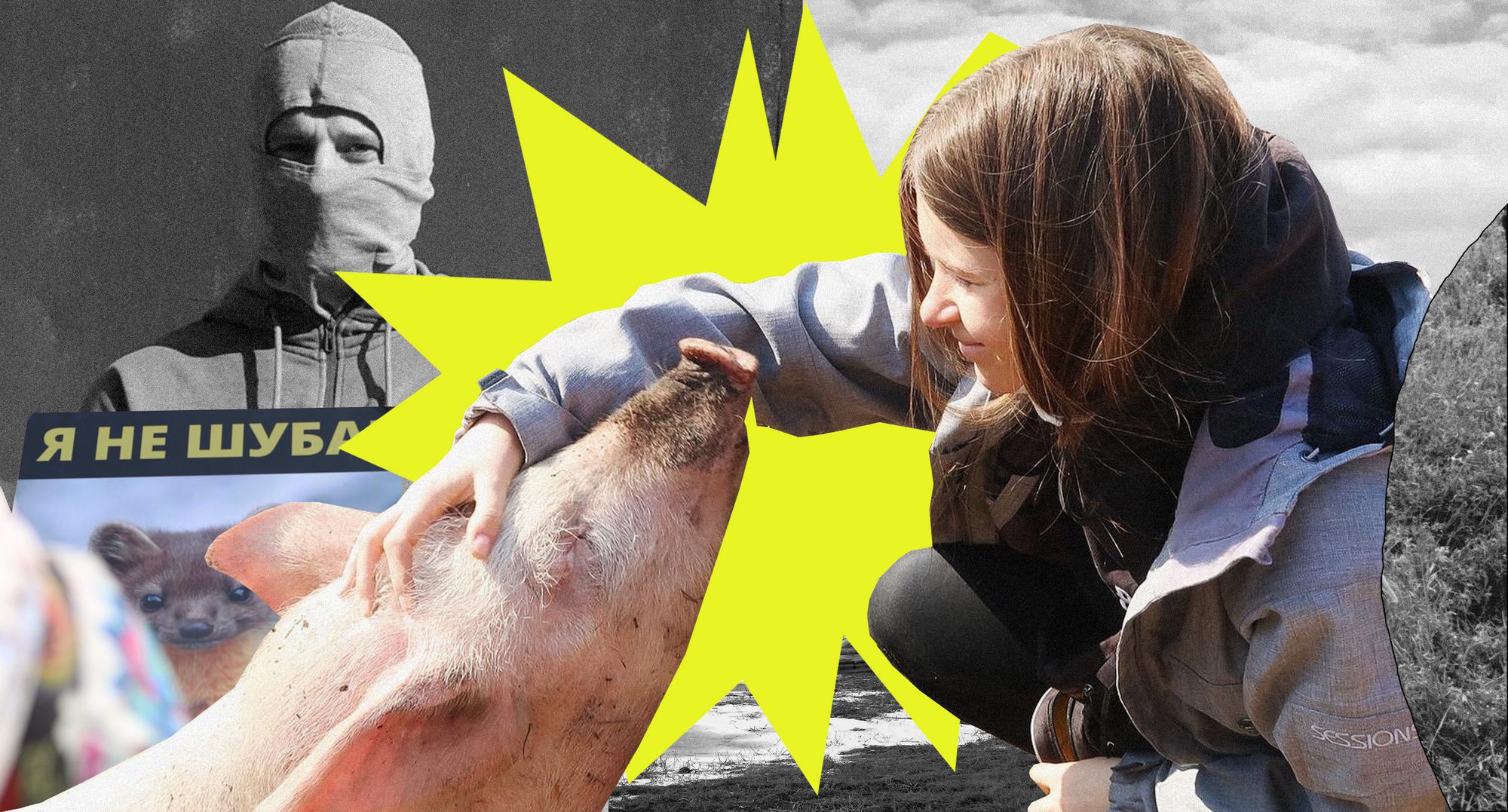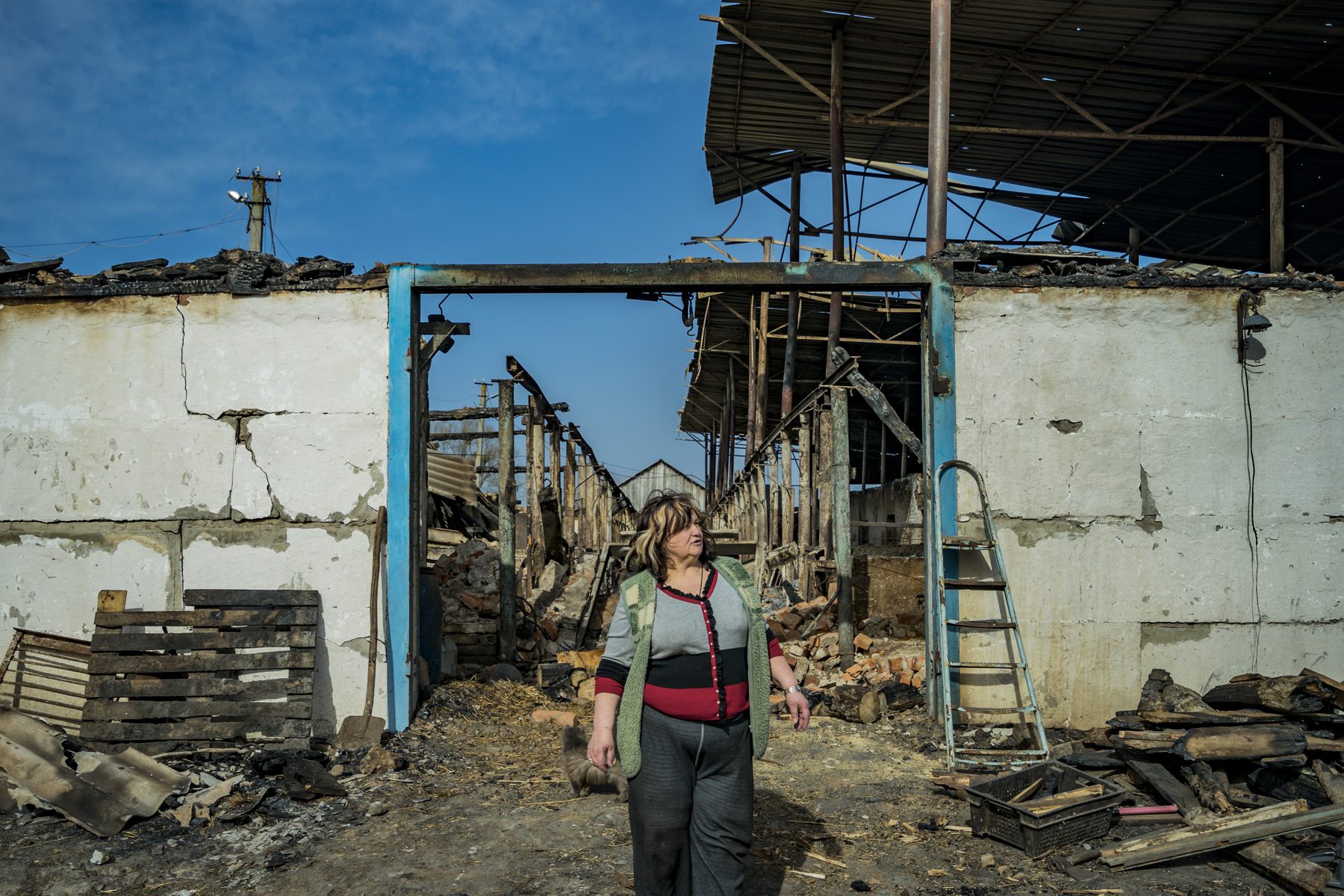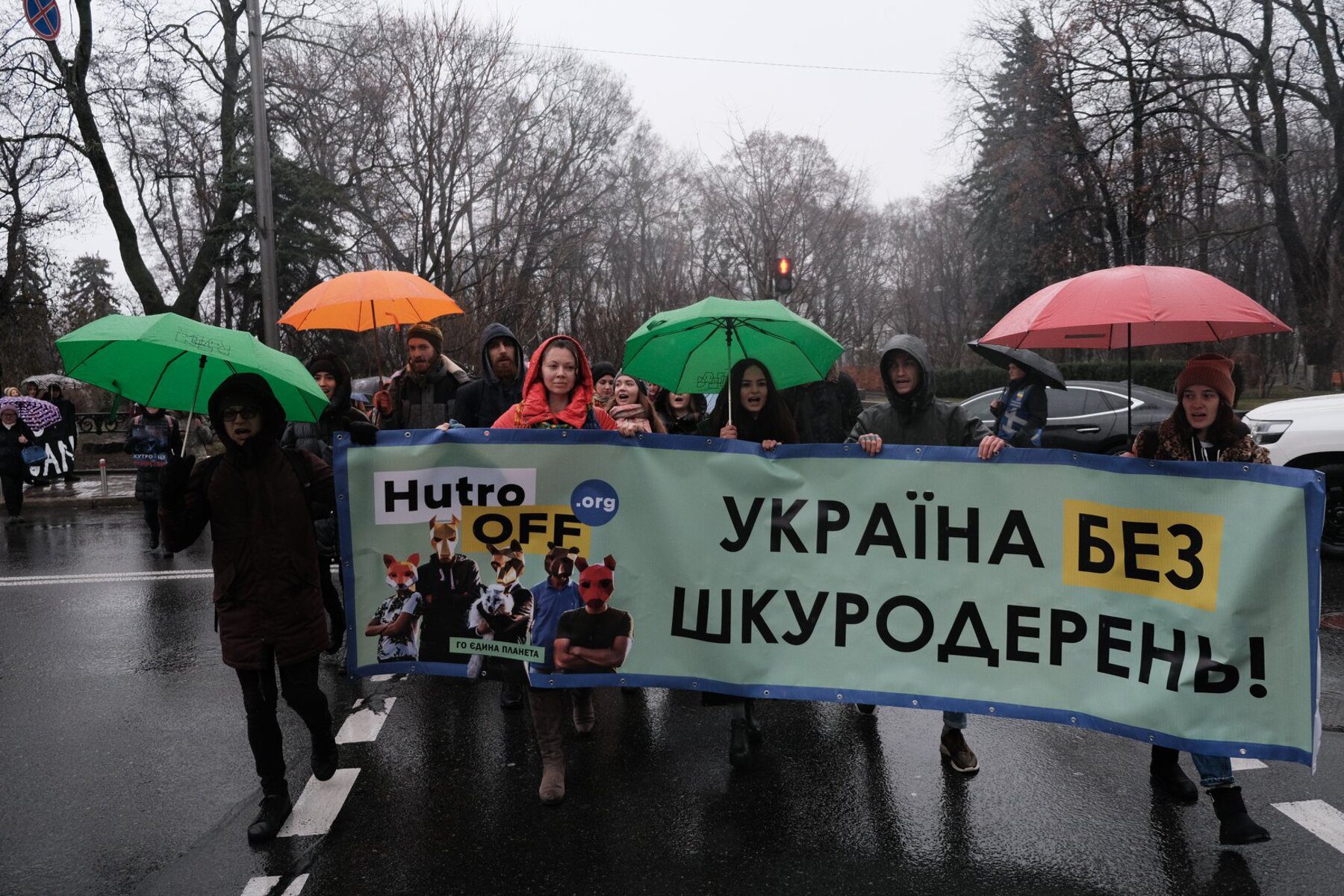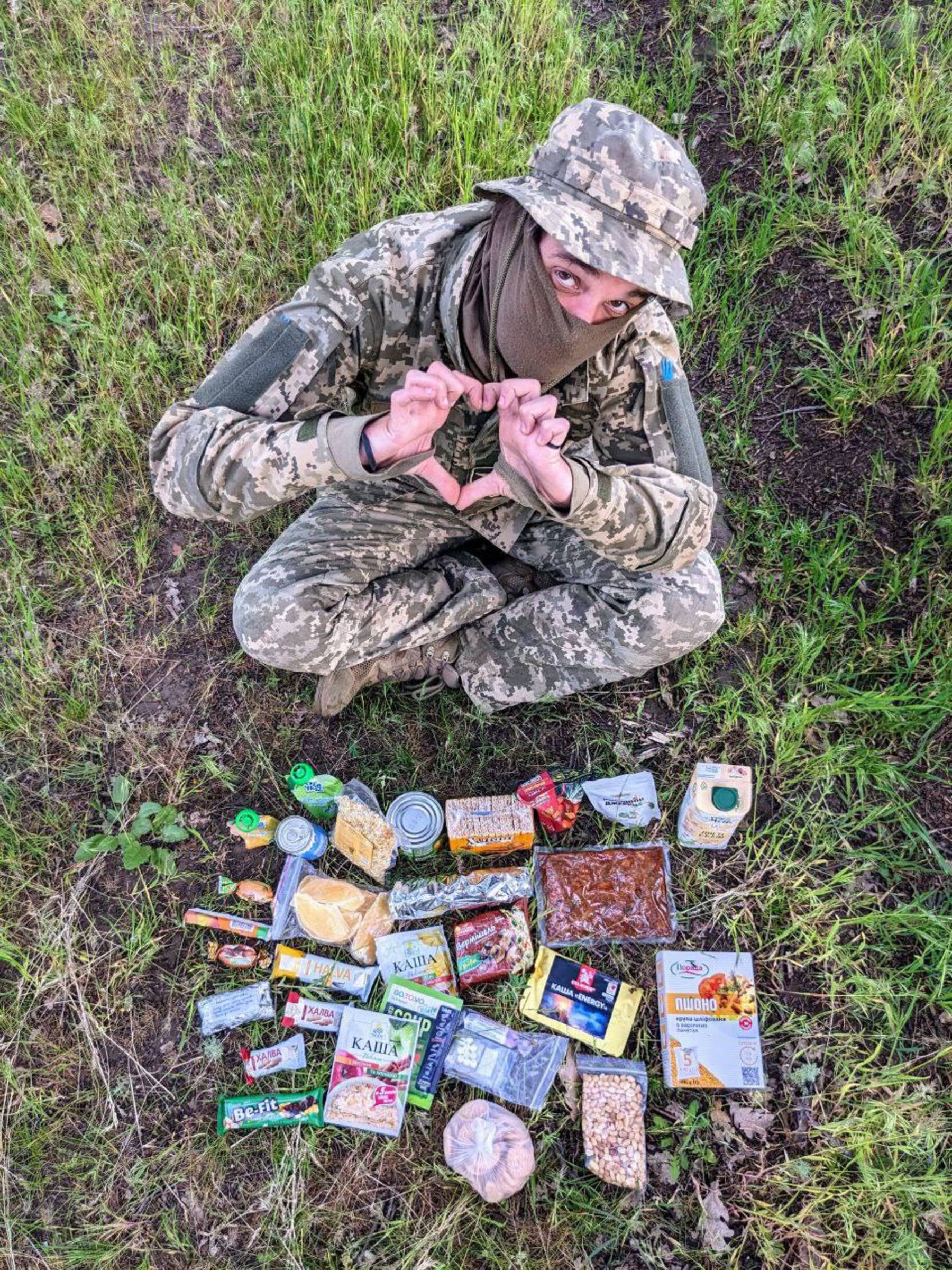During the Russian aggression, animals also faced the fate of evacuation, abuse, injuries, and shelling. Fleeing people often left them locked in their homes, where they died of hunger or thirst. At the same time, industrial farms continue to operate in Ukraine, where animals are forced to live in cramped conditions, grow as fast as possible, and produce more eggs, milk, or fur.
The journalist Olena Sulikovska talked to Ukrainian defenders about whether veganism and the ban on the fur industry were relevant during the war and whether people had become more empathetic to animals.
Livestock are particularly affected by Russia’s military actions. During the occupation, farms become a prison for them, from which they cannot escape. For example, in March 2022, Russian soldiers demonstratively rounded up cows and shot them at the Agromol dairy farm in the Kharkiv region. From February 24, 2022, to March 5, 2023, the occupiers killed at least 3.3 million farm animals — and this does not include the temporarily occupied territories and small livestock enterprises.
Animals during the war: have people rethought their attitude?
Every year, thousands of animals are killed on Ukrainian farms for food and clothing. However, they also feel pain and have the right to live, says Tamara Human, head of the animal rights organization Every Animal.

At the same time, due to the full-scale invasion, people in Ukraine have become more empathetic to their suffering. For example, in June 2022, there was news about a drunken guy mocking a peacock — it was a very resonant event. The same happened with the Nemo Hotel, where two bloggers arranged a video shoot with fur seals. In peacetime, people would have paid less attention to this, but now there is a remarkable intolerance to cruelty, the animal rights activist is convinced.
“When a person is in a vulnerable position, where someone wants to kill them, take away their freedom, they can be more empathetic to animals that are in this state all the time. Especially to the so-called farm animals. We are very aware of injustice when someone’s life is being taken. And Russians are ruthless — not only to people but also to animals,” says Tamara Human.
The animal rights activist hopes that people who see animals affected by the war will begin to sympathize with them. “If we did not eat these animals, they would not be on farms, and none of them would have suffered from shelling. Animals are left behind by people who evacuate but do not take them. If not from rocket attacks, they die of thirst or hunger. It is not uncommon for animals to be left locked up to die after shelling. For these people, they are not animals, but just a resource and a number in the documents,” the expert states.

A woman stands in front of her destroyed farm near the front line, on the outskirts of Kharkiv. Photo: Celestino Arce / NurPhoto via Getty Images
Fur abandonment and the state of the environment in Ukraine: how it is connected
There is another type of cruelty to animals — fur production. The conditions there do not meet the natural needs of predatory animals, and the method of slaughter is unjustified (electric current in the mouth and anus, gas poisoning, poison injection). Often, the animal is still alive when they start skinning it. For example, China is the largest exporter of fur in the world. They see no problem in catching cats and dogs, hanging them up, skinning them, dyeing the fur, and selling it to Ukraine.

Natalia Shevchuk, a volunteer of ZooPatrol and a member of the NGO Every Animal, emphasizes in her conversation with Zaborona that fur farms are also environmentally dangerous in addition to cruel conditions. They pollute the soil, water bodies, and air with viruses, bacteria, and toxic substances. The World Bank ranks fur production among the five worst industries that pollute the environment with heavy metals.
“Under every post about the detrimental impact of fur production on the environment, someone will write: “But your synthetic fur coats are even worse!” But this is not true. According to the CE Delft study “The Environmental Impact of Mink Production,” the production of natural fur was recognized as the most harmful to the environment in 17 out of 18 indicators. This harmful impact is 2-28 times greater (depending on the criterion) than the production of other materials for clothing,” Shevchuk notes.
According to her, 15 European countries have already adopted anti-fur bans, mainly for environmental reasons. After all, fur farms pose a risk to people: manure, droppings, and urine from fur farms get into the soil, water bodies, and groundwater. They are often contaminated with viruses and bacteria that can be deadly and resistant to antibiotics.
Moreover, fur farms are also unprofitable for the state: the share of revenues from their activities in Ukraine’s state budget is less than 0.004%, while the damage from environmental pollution has never been calculated.
The anti-fur campaign KhutroOFF (FurOFF), in which Natalia participated even before the full-scale war, obtained a court ban on the operation of a fur farm in the Zhytomyr region and stopped the construction of four new ones in the Lviv region. In addition, she collected a record number of votes on the Verkhovna Rada’s website under a petition to ban fur farms, developed a bill to ban them in Ukraine, and received the support of MEPs from 13 countries. However, the work is currently on hold.
“The main person in the anti-fur campaign is Pavlo Vyshebaba, who has been at the front since the first days of the war. Without him, our work stopped for a while. Sometimes, I make black jokes with him and say: “You shouldn’t die because they haven’t banned slaughterhouses yet.” We are on a pause but will return to the anti-fur campaign and push for our cause,” says the animal rights activist.

Protest against skinning. Photo: Hutro OFF
Attention to veganism among Ukrainians: is it time to talk about it now?
“Every Animal is one of the largest vegan organizations in Ukraine. The founder Tamara Human says that the course for beginner vegans has 10,000 registrations, three of which were made during the full-scale war.
Today, the organization’s work involves hundreds of active volunteers across Ukraine. One of their projects is the Vegan Kitchen of Ukraine, where IDPs were fed free lunches. It operated simultaneously in 11 cities of Ukraine. Volunteers prepared 6-8 thousand meals a month.
At the same time, they fed the military. While they were in territorial defense within the city, the volunteers prepared lunches and sent rations. As of November 2023, the organization has distributed 126,000 meals and sent 1,300 rations to the military. The meals include various alternatives to protein products: vegetable sausages, seitan, tofu, and nuts. It has first and second courses, pates, canned food, yogurt, and vegan sweets.
During a full-scale war, volunteers organize a charity festival called Vegan Weekend, which brings together people interested in trying vegan food and donating. This year, they gave lectures not only about veganism but also about post-traumatic stress disorder and eating disorders. Every Animal has held six such events and raised over UAH 1 million for the needs of the Defense Forces.

Vegan transfers to the military. Photo: NGO “Every Animal”
How civilians can reduce animal suffering
Tamara Human says that the first step is to change daily habits. For example, choose vegetable milk for coffee and plant-based products for breakfast. “There are a lot of vegan food producers in Ukraine now: you can eat the same eggs but with tofu or vegetable sausages instead of meat. It’s about satiety and pleasure, and at the same time, it’s about not harming animals, the animal rights activist notes.
You can also support volunteers, shelters, and organizations that rescue animals from the war zone or find new homes for evacuated animals. Speaking of veganism, this means supporting vegan military personnel who need help with food at the state level.
“We are working to inspire the Ministry of Defense to introduce vegan food in our army. I know a story when a soldier was on his way to pick up a parcel of vegan food and was killed by artillery fire. We often receive sad news that someone did not have time to pick up or eat our parcel. Every time the military goes to volunteers to pick up food, they risk their lives,” states Tamara Human.








